-
current
recommendations- Liefdefjord
New page dedicated to one of Spitsbergen's most beautiful fjords. Background information and many photos.
- New Spitsbergen guidebook
The new edition of my Spitsbergen guidebook is out and available now!
- Liefdefjord
New page dedicated to one of Spitsbergen's most beautiful fjords. Background information and many photos.
Page Structure
-
Spitsbergen-News
- Select Month
- June 2025
- May 2025
- April 2025
- March 2025
- February 2025
- January 2025
- December 2024
- November 2024
- October 2024
- September 2024
- August 2024
- July 2024
- June 2024
- May 2024
- April 2024
- March 2024
- February 2024
- January 2024
- December 2023
- November 2023
- October 2023
- September 2023
- August 2023
- July 2023
- June 2023
- May 2023
- April 2023
- March 2023
- February 2023
- January 2023
- December 2022
- November 2022
- October 2022
- September 2022
- August 2022
- July 2022
- June 2022
- May 2022
- April 2022
- March 2022
- February 2022
- January 2022
- December 2021
- November 2021
- October 2021
- September 2021
- August 2021
- July 2021
- June 2021
- May 2021
- April 2021
- March 2021
- February 2021
- January 2021
- December 2020
- November 2020
- October 2020
- September 2020
- August 2020
- July 2020
- June 2020
- May 2020
- April 2020
- March 2020
- February 2020
- January 2020
- December 2019
- November 2019
- October 2019
- September 2019
- August 2019
- July 2019
- June 2019
- May 2019
- April 2019
- March 2019
- February 2019
- January 2019
- December 2018
- November 2018
- October 2018
- September 2018
- August 2018
- July 2018
- June 2018
- May 2018
- April 2018
- March 2018
- February 2018
- January 2018
- December 2017
- November 2017
- October 2017
- September 2017
- August 2017
- July 2017
- June 2017
- May 2017
- April 2017
- March 2017
- February 2017
- January 2017
- December 2016
- November 2016
- October 2016
- September 2016
- August 2016
- July 2016
- June 2016
- May 2016
- April 2016
- March 2016
- February 2016
- January 2016
- December 2015
- November 2015
- October 2015
- September 2015
- August 2015
- July 2015
- June 2015
- May 2015
- April 2015
- March 2015
- February 2015
- January 2015
- December 2014
- November 2014
- October 2014
- September 2014
- August 2014
- July 2014
- June 2014
- May 2014
- April 2014
- March 2014
- February 2014
- January 2014
- December 2013
- November 2013
- October 2013
- September 2013
- August 2013
- July 2013
- June 2013
- May 2013
- April 2013
- March 2013
- February 2013
- January 2013
- December 2012
- November 2012
- October 2012
- September 2012
- August 2012
- July 2012
- June 2012
- May 2012
- April 2012
- March 2012
- February 2012
- January 2012
- December 2011
- November 2011
- October 2011
- September 2011
- August 2011
- May 2011
- April 2011
- March 2011
- February 2011
- January 2011
- December 2010
- November 2010
- September 2010
- August 2010
- July 2010
- June 2010
- May 2010
- April 2010
- March 2010
- February 2010
- November 2009
- October 2009
- August 2009
- July 2009
- June 2009
- May 2009
- April 2009
- March 2009
- February 2009
- January 2009
- December 2008
- November 2008
- October 2008
- August 2008
- July 2008
- June 2008
- May 2008
- April 2008
- March 2008
- February 2008
- April 2000
- Select Month
-
weather information
-
Newsletter

| Guidebook: Spitsbergen-Svalbard |
Home
→ December, 2022
Monthly Archives: December 2022 − News & Stories
Giævervilla at Snatcherpynten, Recherchefjord: new virtual tour
I suppose that many readers of this website will have been to Spitsbergen, and some may even have been at Snatcherpynten in Recherchefjord. This bay is part of Bellsund, a very beautiful and interesting fjord system in Spitsbergen. Amongst others, there are remains of hundreds of years of arctic history hidden in the arctic landscape.

There is a new page with virtual tour dedicated to Giævervilla at Snatcherpynten in Recherchefjord.
Giævervilla at Snatcherpynten is an old house that has a history which is a bit special. If you have been there – great. But the good news is: if you have not been there, it doesn’t matter anymore, because now there is a whole new page dedicated to Giæverhuset. There are panorama images, a photo gallery and of course the page tells the story of the place. Enjoy!

Screenshot of the new virtual tour of Giævervilla at Snatcherpynten.
New sewage water treatment in Longyearbyen filters 50 kg waste in one week
It may not exactly fit into the atmosphere of the Christmas days … but nevertheless, there is some good news here, some kind of gospel, if you want it that way 🙂
It is a common question: who is the sewage water treated in Longyearbyen? And it does usually raise an eyebrow when the answer is: not at all. And this is how it had been for more than a century, until November 2022. All sewage water went straight into the fjord without any treatment at all.
But now it is December 2022, and things have changed to the better.
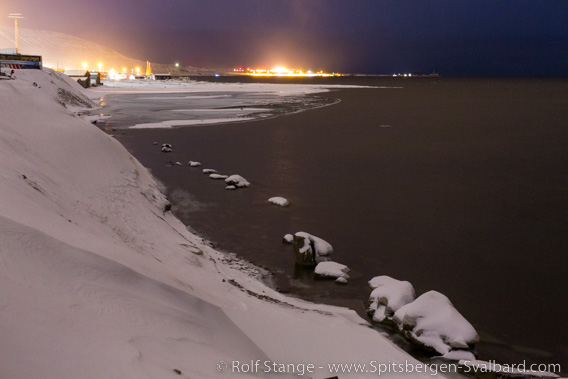
Adventfjord next to Longyearbyen:
there are definitely places in this area where I wouldn’t go swimming.
A mechanical sewage water treatment was put into operation on 01 December. The result of the first week of operation was impressive: 50 kg of garbage were removed from the sewage water before it went into Adventfjord, according to a notification by Longyearbyen Lokalstyre. A selection of hygiene articles as one might suspect. All the stuff that doesn’t belong into the toilet, as everybody (?) knows, but that nevertheless obviously far too often ends up there. Which is a phenomenon in itself, but that is not the subject here.
At least, now there is improvement and a lot of that shit (sorry) will not end up in the sea anymore from now on.
Longyearbyen local council to thin out in 2023
Earlier this year, the Norwegian government finally took the controversial decision to dispossess Longyearbyen’s inhabitants who don’t have Norwegian passports off the local voting rights, except a very few who have spent at least three years as registered inhabitants of a mainland community. click here for more details of the history of the whole thing.
By now, some of the consequences of this drastic decision are becoming more clear, although the first local elections under the new legislation will not be before the fall of 2023. Then, about 700 former voters will not be able to take part in the elections, according to NRK. This concerns both voters and candidates, such as Olivia Ericson from Sweden, who will not be able to line up again in 2023.
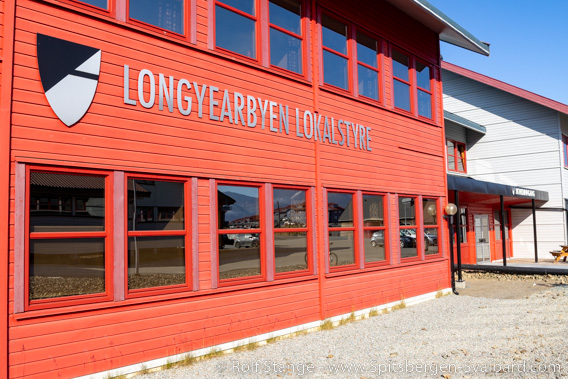
Longyearbyen Lokalstyre: about to thin out in 2023.
Longyearbyen has something near 2500 inhabitants. This is the total number, including many who are not yet of full age anyway or who have not yet lived in Longyearbyen for three years, which has always been a requirement to vote. The actual number of voters is accordingly lower. 700 voters who lose their voting rights accordingly represent something near one third. Future local councils will thus lose a lot of democratic legitimation. It is also feared that many will feel as second class citizens and hence reduce their commitment to local matters.
Another consequence is that smaller parties may not be able to line up anymore for elections in the future. Parties must have at least seven candidates to take part in elections, and smaller parties have always struggled to meet this requirement in a small place such as Longyearbyen. The local Green party MDG (Miljøpartiet De Grønne) has now announced to not line up anymore for the 2023 elections. In 2019, three of their candidates were foreigners, including Olivia Ericson from Sweden. Ericson and other people are shocked and frustrated to be deprived of their democratic rights. There may be more parties who will drop out for the same reason, for example Fremskrittspartiet (FrP).
Several current members of the local council, including current mayor (lokalstyreleder) Arild Olsen, have announced that they will quit in 2023 because of the new legal situation, according to NRK.
Driving licenses: Sysselmester finds solution
The recent driving license issue caused considerable unsettledness especially in Longyearbyen’s Thai community. By coincidence, it was found out that driving licenses from countries such as Thailand do not meet certain formal criteria and hence are not valid in Norway including Svalbard. This has caused difficulties for a number of people, especially from Thailand, who live in Longyearbyen. There are many who need to drive a car also within their jobs.
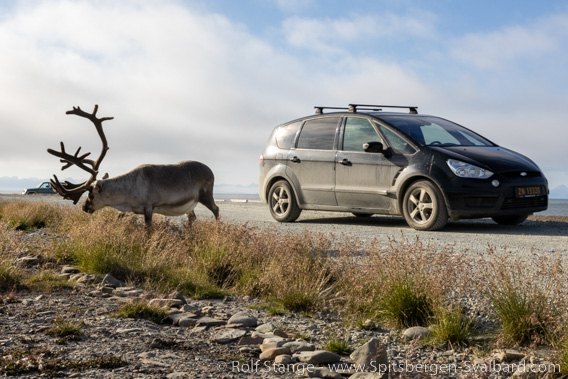
Road traffic in Spitsbergen.
Norwegian authorities have now established at least a temporary solution, according to a notice by the Sysselmesters: driving licenses from countries that have ratified the Vienna Convention on Road Traffic will be accepted until 31st December 2023. Until then, a permanent solution needs to be found. There is some small print connected to this solution, but it is assumed that it will apply to most, if not all, of those who currently have a problem with their driving license.
Time of moulting of polar foxes controlled by temperature
Polar foxes (also known as “arctic fox”) moult twice a year, with a change from the thicker winter fur to the thinner summer fur in spring and back again in autumn. Both kinds of polar foxes do that: the white fox with the prominent change from white winter fur to brown summer fur and back, and the blue fox which is – no, not blue, but brown throughout the year.
Next to thermal isolation, camouflage can be an important function of the fur, at least for the white fox, and this requires a synchronised timing of the moulting and the snow melting/fresh snow periods.
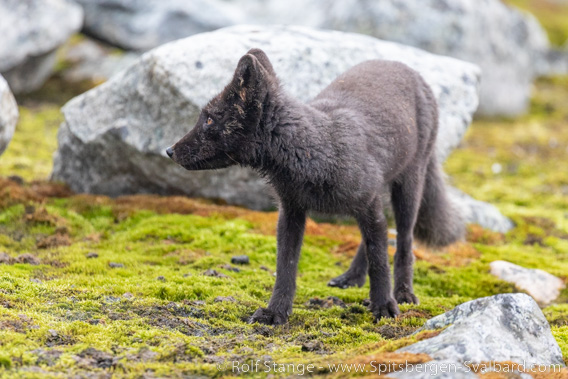
Polar fox, fur version 1: Blue fox.
So far, scientists assumed that the timing of the moulting period is largely controlled by the length of daylight. This could be problematic if the timing of the snow melt/fresh snow period gets decoupled from certain customary daylight length values. This might result in animals still having white winter fur on brown tundra when the snow melt is through, earlier than in previous times, and this again would involve a loss of camouflage: the animal has a higher risk of falling victim to a predator or possibly to reduced hunting success if it itself is a predator, such as the polar fox.
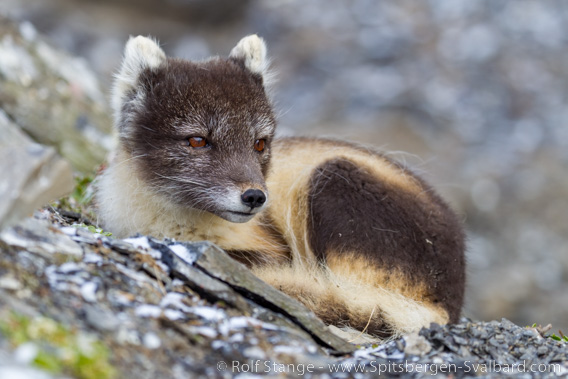
Polar fox, fur version 2: white fox in summer coat.
But recent scientific data indicate that the timing of the fur change may be coupled to temperature and snow cover development rather than to the length of daylight, as biologist Lucie Laporte-Devylder and co-authors from NINA (Norwegian institute for nature research) write in a scientific publication Laporte-Devylder used photos taken over years by automatic cameras and correlated them with meteorological and snow cover data. The result indicates that temperature and snow cover are a significant factor for the timing of the fur change of polar foxes. This might mean that polar foxes are better able to adjust to climate-change-induced changes the snow cover then previously believed.
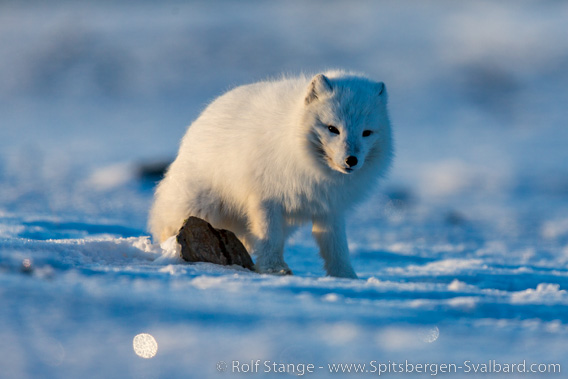
Polar fox, fur version 3: white fox in winter coat.
The data are from the Snøhetta area on the Norwegian mainland. The results may, however, not be fully applicable to the polar fox population in Svalbard. On the mainland, polar foxes with bad camouflage run a higher risk of predation by sea eagles, but there are no eagles or other large birds of prey in Svalbard.
There, however, polar foxes have an entirely different problem with their fur: lice are currently becoming more and more common in Svalbard. So far, nobody can tell where they are coming from and what the consequences will be for the affected foxes.
News-Listing live generated at 2025/June/15 at 05:09:51 Uhr (GMT+1)




























